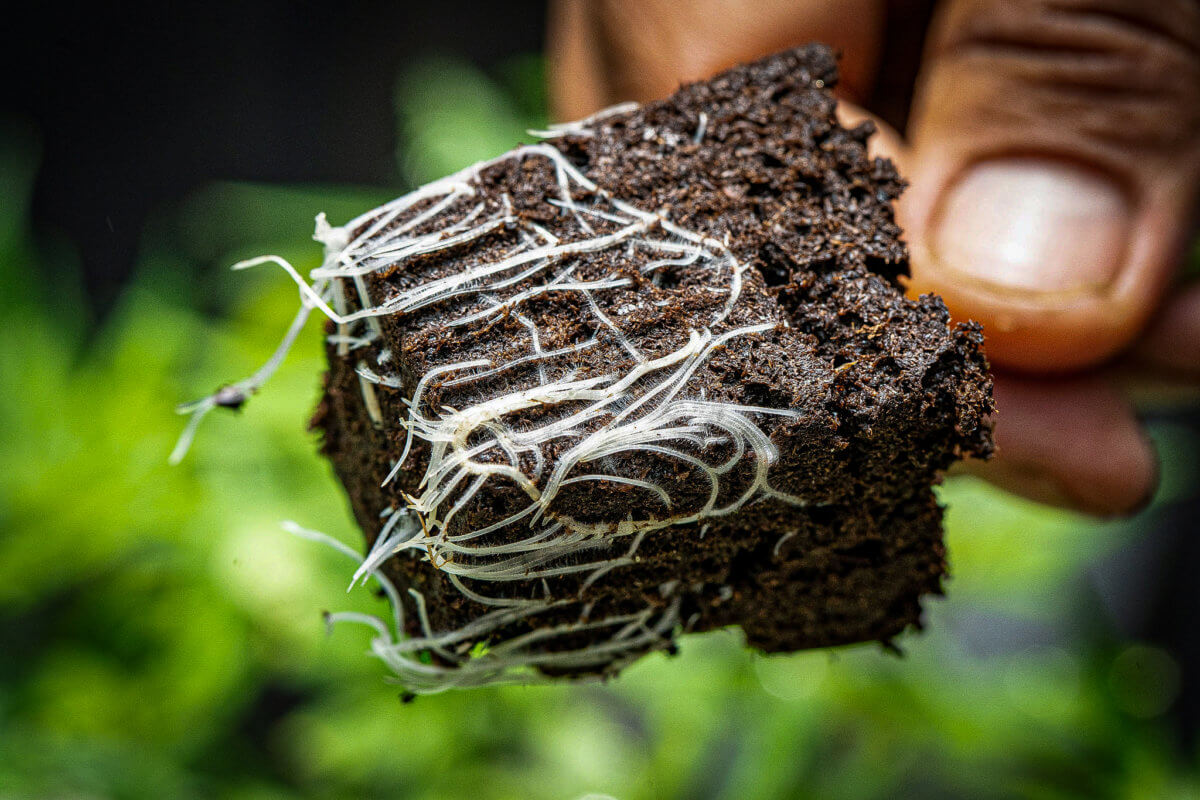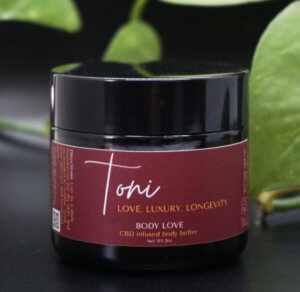Committee Blog: Harnessing the Potential of Partnership Between the Cannabis Industry and Academia

Published by NCIA’s Education Committee (EC)
Although cannabis companies are limited in the scope of their business activities awaiting much needed descheduling, it hasn’t stopped the need for educating and preparing the cannabis workforce. For some states cannabis tax dollars are appropriated to education, violence prevention and workforce development and often developed through the lens of social equity. Ohio, Colorado, Illinois, and Michigan for example, each invest in cannabis literacy in some way. Cannabis programs such as Oaksterdam University offer learners certificates or degrees for every aspect of the supply chain. Departments shape cannabis curricula with the support of faculty members and subject matter experts from both the private and nonprofit sector. These diverse educators instruct to prepare employees to fill the expected 1.5 million to 1.75 million cannabis jobs by 2025 as estimated by the Bureau of Labor Statistics.
Partnering with academia
Legacy growers and professionals from more mature markets like California and Colorado find themselves advising academic partners on the type of information most needed by the first generation of cannabis employees. Amanda Reiman, PhD MSW serves as the Chief Knowledge Officer for New Frontier Data and instructor of Implications of Legalization of Cannabis: Policy and Compliance for Excelsior University, she believes legacy knowledge, paired with academic research, will help address the gaps in knowledge created by prohibition. “For decades, academic institutions had to stay an arm’s length from cannabis due to its legality. Now, with state laws changing, it has opened up an opportunity not only for academic institutions to offer coursework to support the emerging industry, but to learn from those who have been growing and working with cannabis prior to legalization,” Reiman says.
Using the state laws as a baseline for cannabis literacy, programs structure certificates and degrees to prepare learners to understand the complexities of the cannabis industry. For cannabis businesses working with the academic sector is a way to keep the pulse on emerging local talent, remain aware of the effectiveness of educational approaches and in some instances, earn an income. Positioning your business in academic networks is best when it’s both mutually beneficial and ethical.
It is important to keep in mind that programs can lead to good-paying jobs for those who’ve suffered from the war on drugs and justice-impacted populations.
Some programs are of no cost to students, while others compensate students for their participation. Certifications and degrees however don’t ensure employment. Most importantly cannabis businesses providing subject matter expertise must also continue to learn how to have a favorable impact on student populations that require learning how to serve them best.
Teaching
When teaching cannabis student populations will vary. It is important to approach the various topics with a sensitivity to the historical injustices and disparities that have existed within the cannabis industry. Some students may have faced disproportionate barriers to entry into the industry due to systemic discrimination and lack of resources. Other students may have different experiences related to health and wellness that when discussing need to be facilitated with great diplomacy, discretion and protection of privacy.
Instructors must provide accurate and unbiased information about cannabis, but sourcing materials may be challenging. It is recommended to identify the most credible and accessible resources for courses.It is also important to acknowledge the potential for exploitation and exploitation of vulnerable communities in the cannabis industry, and to educate students on how to navigate these challenges and protect their rights.
“I came into cannabis from teaching urban ecology, urban agriculture and environmental justice concepts and I was quite familiar with learning and teaching novel concepts to diverse audiences. But what I noticed is that it was challenging for my peers. I had helped write our Illinois legislation and also had a professional cannabis network. Industry experts were invaluable for me to be successful in teaching this material and without those trusted peer mentors I doubt I would have been able to create meaningful coursework and identify high quality resources to do so,” shared Mila Marshall, PhD, NCIA Education Committee Chair.
Furthermore, it is crucial to empower social equity students to advocate for themselves and their communities within the cannabis industry. This may involve providing resources and support for networking, business development, and community engagement that are embedded in the course material and syllabi.
“Teaching is a skill above and beyond knowing the subject. For subject matter experts to be effective teachers, they should gain knowledge around differential learning styles, student engagement and effective communication,” shared Dr. Reiman. She contends that being a cannabis expert is only part of what is needed to be an effective teacher in the cannabis space. Overall, teaching cannabis with social equity students should be approached with an ethical and inclusive mindset, recognizing the unique challenges and opportunities that these students face in the industry. By promoting transparency, empowerment, and social responsibility, educators can help to foster a more equitable and just cannabis industry for all. Instructors play a key role in unlocking the potential of cannabis learners and there is a learning curve for instructors. Dr. Hemant Kumar has worked many years as a medical cannabis educator and is the Program Director of M.S. in Biotechnology and Office of Online Education and Expanded Programs at Morehouse School of Medicine. He has realized that it’s important to understand the student audiences and their level of knowledge of cannabis. He promotes remaining aware that academia is just as susceptible to the dynamic and fast paced nature of cannabis as an industry. “Scientists are globally publishing cannabis discoveries daily, shared Dr. Hemant. We see there also is a fast growing demand for business and entrepreneurial courses with potential for career pathways; manufacturing, tech start-ups, data analytics, marketing and even healthcare,” Dr.Kumar shared.
Advisory councils
Programs benefit from the strategic advice of cannabis businesses and social equity advocates. Advisory councils are often informal in nature and independent from state regulation oversight. Council members provide insight on everything from hiring of educational professionals to establishing events and bringing in additional resources to construct greenhouses or implement hands-on internships. Commitments can vary from a single semester to an entire year or more.
Academic Advisory councils provide feedback and direction for long-term goals and strategic planning. With cannabis more in the academic spotlight than ever, it is crucial we start developing programming and educational strategies to highlight cannabis career opportunities.
As cannabis is a continually evolving industry, there are opportunities for subject matter experts to collaborate with the academic community. The cannabis industry intersects with so many different aspects of the workforce that span multiple sectors and academic degrees. Yet there are often missed opportunities for securing talent from junior colleges, trade schools, and research universities.
Cannabis organizations’ presence at career fairs ideally should be used for visibility and awareness in the cannabis space. This allows future employees and the canna-curious an opportunity to view this industry as a legitimate career path with ample employment opportunities. It closes the communication and educational gaps and offers opportunities for subject matter experts to collaborate with the academic community.
Cannabis companies, like other industries, are part of our nation’s workforce. To normalize our booming industry, it’s important to spread awareness that the medical cannabis space is a thriving industry in need of graduates, interns, and talent from all walks of life, to help fill a myriad of different positions within the cannabis space.
Our industry is unique in that it encompasses so many different fields of study across such a vast range of subject matter. Educating academia is crucial to paving the way for research and the normalization of this industry. We must empower and support entrepreneurs and their communities by creating an equitable and sustainable cannabis industry. By aligning with academia, we unite with community and industry leaders to achieve cannabis normalization for our communities.
Committee Blog: Hop Latent Viroid (HLV) – Overview of Pathogen Biology, Spread, Control, and Testing

by Sarah Taylor-Laine (NCIA Education Committee, NCIA Cultivation Committee)
Hop Latent Viroid (HLV/HpLV), sometimes referred to as “dudding” or “stunting”, is one of the most pressing biological threats facing the cannabis industry worldwide. In the United States, HLV was first detected in California in 2017. Subsequent research by Dark Heart Nursery indicated that 90% of Californian facilities tested at the time were positive for the pathogen. The Dark Heart Nursery research team estimated that an HLV epidemic could result in up to US$4 billion in losses to the cannabis industry annually. To add insult to injury, HLV-infected cannabis may be linked to cannabis hyperemesis syndrome (CHS), which affects both adults and children.
As the name suggests, HLV was first detected in hops (Humulus lupulus; Cannabaceae). Outside of the United States, HLV has been detected in hops in New Zealand, the United Kingdom, South Korea, Japan, Brazil, the Czech Republic, Poland, Slovenia, Germany, China, Belgium, Turkey, and Canada. Within the United States, HLV has been detected in hops in Washington, and in cannabis in California, Colorado, Nevada, Oregon, and Washington. However, these are only officially-published reports and given the worldwide occurrence, HLV is likely to be endemic to many locations not listed here.
Viroids are subviral pathogenic RNA molecules which replicate within host plants and are only approximately 1/50th the size of the smallest viruses. Specifically, HLV is a circular RNA molecule of approximately 256 nucleotides in length, which can assume a rod-shaped secondary structure. In hops, HLV has been shown to interact with other viruses and alter the gene expression patterns of host plants. HLV has been found to not only infect hops and cannabis, but also Dianthus deltoides, Chenopodiastrum murale, Dysphania pseudomultiflora, cowpea (Vigna unguiculata), common bean (Phaseolus vulgaris), and stinging nettle (Urtica dioica). Notably, by subjecting hop plants to heat stress, researchers have been able to induce “thermomutant” HLV variants which could then infect both tomato (Solanum lycopersicum) and Nicotiana benthamiana, opening up the possibility that HLV could spread to new plant species under climate change-induced warming scenarios.
HLV often does not produce obvious symptoms in hops, and where they do occur there may be a long latency period, making control difficult. In hops, HLV is often detected early in the season at the plant base, where it gradually spreads up the plant and can be detected in all aerial tissues by mid-season during the flowering period. In cannabis, HLV causes brittle stems, a horizontal growth habit, and the destruction of flowers and trichomes. In both hops and cannabis, HLV may cause pathology in host plants through RNA interference (RNAi). HLV infection is reported to reduce THC content by 50-70%, which is not surprising as glandular trichomes are the source of THC in cannabis. In hops, HLV infection has been shown to reduce the content of terpenes and other secondary metabolites in susceptible varieties. It is currently unknown whether HLV infection decreases the terpene content in cannabis, but it is very likely.
In hops, HLV is not readily transferred by seeds, but may be transferred in uninucleate pollen. However, activating pollen nuclease HBN1 was shown to eliminate HLV in mature pollen. “Real world” transmission of HLV appears to primarily occur through the use of contaminated cutting tools, the use of infected plant materials, or from plant-to-plant. However, as an obligate pathogen, HLV requires living host tissue in order to survive and propagate. HLV has been confirmed to be transmitted between hop plants by potato aphid (Macrosiphum euphorbiae), green peach aphid (Myzus persicae), and hop aphid (Phorodon humuli), and may also be transferred by other herbivorous insects. Planting cannabis on sites previously planted with infected host plants is likely to be a source of infection, although this has not been experimentally verified.
In hops, chilling plants at 2-4 °C (approximately 35-40 °F) for 8-21 months prior to harvesting meristem tips for propagation has been shown to reduce or eliminate the spread of HLV, although the effect may be variety-specific. In addition, subjecting hop mericlones to heat treatment cycles (25-35 °C/77-95 °F for two weeks) has been shown to reduce HLV incidence by 70-90%. In terms of waste management, anaerobic fermentation at 70 °C (158 °F) causes HLV degradation, although standard ensiling does not appear to be effective. As with most viral and viroid diseases, there is currently no cure available to disinfect mature host plants. However, researchers are currently studying whether RNAi may have utility in cannabis crop protection against viral and viroid infections. Therefore, it is currently recommended to test all stock plants to confirm that they are pathogen free and to destroy all infected materials.
Plant materials can be tested for HLV infection using several molecular techniques, including DNA barcoding, RNA sequencing (RNA-seq), recombinase polymerase amplification (RPA), quantitative real-time polymerase chain reaction (qRT-PCR), reverse transcription PCR (RT-PCR), dot-blot hybridization, tissue print hybridization, in situ hybridization, and enzyme-linked immunosorbent assay (ELISA).
It is unknown how many, and which, lessons learned in hops will be transferable to cannabis. Both susceptibility and control of HLV in cannabis is likely to be variety-specific. To enable the breeding of HLV-resistant cannabis varieties, future research should focus on characterizing the molecular mechanism underlying HLV pathogenicity and host susceptibility. However, the situation remains that HLV is likely endemic in many cannabis growing regions and cultivators should focus on targeted biosanitation efforts to thwart HLV infection in their crops. These efforts should include testing all propagation materials for infection, destroying infected materials, sanitizing cutting tools and work surfaces, and limiting herbivory by sap-sucking insects such as aphids.
 Sarah Taylor-Laine is a plant science polymath. Sarah has taught and developed college-level courses related to general biology, plant biology, and cannabis sciences at several institutions, most recently at Beal University. She has also worked across many industries including agriculture, horticulture, and arboriculture, performing diverse work in research, quality control, product development, regulatory affairs, scientific communication, and field-based consulting.
Sarah Taylor-Laine is a plant science polymath. Sarah has taught and developed college-level courses related to general biology, plant biology, and cannabis sciences at several institutions, most recently at Beal University. She has also worked across many industries including agriculture, horticulture, and arboriculture, performing diverse work in research, quality control, product development, regulatory affairs, scientific communication, and field-based consulting.
Video: NCIA Today – Thursday, July 14, 2022

Committee Blog: Strong Brands Are Led By Strong Employee Development

 by NCIA’s Education Committee
by NCIA’s Education Committee
Brand drives revenue. Companies – in any industry – with a strong brand are able to sell their product at a premium price over the non-branded (or perhaps generic) products in their market or sector. Think of a few of the household names with strong brands (e.g., Apple, Tide, Chevron, or Peet’s Coffee). These companies have direct competitors but they are able to charge a higher price point because of their brand and the loyalty that comes with a positive brand experience. The companies also draw customers for repeat business every time they are in the market for the product. Loyalty drives repeat business. Revenue increases from investing in your brand far outweigh the costs, and many of those revenue increases are rewarded directly from training and developing employees.
Continuing our theme from a previous blog, investing in your employees has a direct correlation to building a strong brand, which leads to increased profits. Brand for most consumer products is experiential. Your customer has an experience from which they establish their association with your brand – both positive and negative. The experience may start with where the purchase was made, how the employees (e.g., budtenders) explained the product through the experience of using the product, and finally disposing of the product. Each touchpoint creates a personal brand experience and demonstrates the importance of training your employees throughout the sales and use cycles to provide exceptional customer service and education. Some key reasons cannabis employers should invest in their employees with a focus on brand include:
- Brand drives loyalty, which is derived from the experience your customers have with the product from purchase to disposal. Loyalty drives increased pricing.
- Developed, well-trained employees have relationships with customers that resonate beyond the transaction. Friends support friends.
- From seed through product sale, well-educated employees will increase sales volume by gaining the trust of your customer who may need education about your product and its benefits or differentiators from the product’s competitors. Trained employees build trust which leads to increased sales.
- At the retail level, educated employees will create a better customer experience, and therefore will drive brand loyalty to the dispensary increasing return sales and referral sales. High-traffic retailers have strong brand loyalty, which increases sales of your products on their shelves.
- Educating employees in retail locations will increase sales volume by cross-selling other products in your brand portfolio.
- Customers seeking a specific brand will drive dispensaries to seek out and stock those brands.
- Educated employees will be proud of their employer and its products and therefore go the extra mile to ensure their success and the success of their employer.
A strong company culture of collaboration, employee investment, and thoughtful branding increases your product’s value in a highly competitive market. Customers want to invest, via their purchase power, in businesses that value their employees through a commitment to the personal and professional success of their workers. A company that is able to and focused on enriching its staff is reaping the benefits of flourishing profit margins. The cannabis industry, and general industry as a whole, needs to focus beyond a feast or famine mindset. Investing in your employees builds trust, respect, and loyalty; this can be translated to customers. Building a stable and balanced community of educated employees and happy customers that is sustainable provides repeat sales.
Well-educated and trained employees work as teams, supporting each other and your business. They give back to their employer in many ways both tangible and intangible. For example, they will go out of their way to assist a customer, work a little faster towards the end of the day to get through the line of customers or help to recruit their friends to work at your company, minimizing hiring and onboarding expenses. Invest in your employees, and your teams will succeed. Training doesn’t require extensive budgets. Check here for access to a set of learning tools offered by NCIA. Team members will help each other, not let others fail. They will also drive product recommendations to the products they know (e.g., have been trained on the benefits). Happy employees reward their employer with increased profits by creating a positive brand association to your customers.
NCIA’s Education Committee assists with the design and development of educational programming for NCIA, and helps identify emerging topics in the cannabis space. Learn more about our members here.
Committee Blog: Employee Recruiting and Retention are Expensive… Training is Not

 by NCIA’s Education Committee
by NCIA’s Education Committee
Profit margins are tight for every business in the cannabis industry. From plant through product development to retail sales at a dispensary, keeping a keen eye on costs and managing those costs can be the difference between profit and loss in any given month. The concept of investment – in employees, in technology, in building a culture for success – can also be elusive in an environment when private equity wants their multiple and the taxman is always around the corner. However, successful companies invest in their people and successful teams drive revenue growth. This is as true in the cannabis industry as it is in every industry.
Employee expenses, including salary, are significant for every company in the cannabis industry. A line-level employee costs about $4,100 to hire and onboard according to the Society of Human Resource Management. Senior-level leadership is exponentially more expensive. According to the 2022 Cannabis Industry Salary Guide, “the costs of acquiring and keeping quality team members keep rising fueled by competition for available talent and nationwide salary inflation. Cannabis salaries rose 4% on average in 2021 with compensation for senior executives rising as much as 10%.” Salary is just one component of a successful employee/employer relationship. Hard costs such as benefits as well as soft costs such as culture, training, and long-term development need to be factored into the decision to hire an employee.
The savvy business owner realizes that hiring is just the first step in developing a successful employment program, and just the beginning of the investments required. Training and developing your employees has significant benefits for your corporation. Business owners will reduce turnover, increase sales, and improve morale – all key components of driving profit – through investing in their employees. Let’s outline a few key benefits of training employees with a specific focus on cost and lost revenue:
- Every new hire from entry-level to your most senior strategist takes time and distracts your team from completing their most important roles. From interviews through onboarding, employee churn cuts productivity and distracts your entire team from their best and highest use.
- Unhappy employees make mistakes, are careless, and create risk, which can lead to legal action (for example, employment and harassment, product or financial theft, trade secrets, and investigations by the DOJ, SEC, and IRS are just a few of the types of litigation a company can possibly expect). Lawyers are expensive, and lawsuits take the attention of leadership away from their focus on generating revenue. Well-trained teams implement processes designed to avoid risk and therefore minimize litigation.
- Satisfied employees seek investment from their employer. Investment can be monitory, but it also is training and professional development. When you demonstrate an interest in your team members, they will be happier and your business will grow as they repay that investment through their tangible and intangible efforts.
- People want to belong. We are pack animals by nature, and investing in training demonstrates to employees that you want them to grow and stick around – be part of your pack.
- Unsatisfied employees may steal or take your trade secrets to your competitors. Employee mobility is a drain on the brain power of your teams, and opens your company’s risk profile in ways you have not imagined.
Paying competitive salaries may seem like enough to keep a happily employed workforce with your company, but it’s not enough today. Easy employee mobility and the expectations younger generations have of their employer require a more nuanced approach. The risks of not investing in your employees’ future are analogous to buying a car and never changing the oil. Complete engine failure is exponentially more expensive than adhering to the maintenance schedule. Your employee relations are similar. Providing training, development, and growth opportunities may have a short-term cost, but the long-term benefit is that your cannabis company will produce revenue for many years to come.
As the cannabis industry matures, more and more training resources become available to enrich your staff, invest in their professional development, and educate them so they are able to perform at their highest level onsite. As an NCIA member, your company has access to a plethora of blog posts, webinars, podcasts, and in-person events which can be shared with employees. Utilizing these readily available resources will bolster company culture and impress upon workers their value and importance to your business.
NCIA’s Education Committee assists with the design and development of educational programming for NCIA, and helps identify emerging topics in the cannabis space. Learn more about our members here.
Equity Member Spotlight: Toni Brands with Toni Scott

NCIA’s editorial department continues the Member Spotlight series by highlighting our Social Equity Scholarship Recipients as part of our Diversity, Equity, and Inclusion Program. Participants are gaining first-hand access to regulators in key markets to get insight on the industry, tips for raising capital, and advice on how to access and utilize data to ensure success in their businesses, along with all the other benefits available to NCIA members.
Tell us a bit about you, your background, and why you launched your company.
 I grew up in Connecticut in the 70s and was repeatedly reminded of the cannabis stigmas, witnessing others partake in regular consumption, yet never noted any of the proclaimed stigmas; in fact, it appeared the exact opposite.
I grew up in Connecticut in the 70s and was repeatedly reminded of the cannabis stigmas, witnessing others partake in regular consumption, yet never noted any of the proclaimed stigmas; in fact, it appeared the exact opposite.
I’m a Master’s prepared Registered Nurse and Certified Yoga teacher, working in the healthcare industry for over 30 years. As a child and well into adulthood, I suffered from debilitating eczema, anxiety, and depression, treated with high-dose topical steroids, sedatives, and antihistamines, eventually leading to overuse. In the mid-’90s, I smoked my first joint; I also began pursuing my first nursing degree.
A few years after graduation, I began working as a travel nurse in Newborn Intensive Care Units across the U.S. Although I was very aware of the relief cannabis brought to my physical and mental wellness, I utilized it with underlying shame, guilt, and fear of a positive urine drug test, a legal pre-employment requirement for nurses.
By the early 2000s, I suffered a traumatic professional burnout; at the time, my health was poor, my stress-induced eczema exacerbations left me with painful cracked skin on my face, hands, arms, and legs. I was prescribed the highest dose of topical steroids and antihistamines with no resolve; I was a mental and emotional wreck.
Unfortunately, that wasn’t my first time feeling defeated in my skin; as a child, I ingested various prescribed medications. I can vividly recall feeling like a walking science experiment, constantly misdiagnosed and prescribed drug after drug. Nothing worked; in fact, the treatments left me worse off; it wasn’t until the professional burnout that I decided to take charge of my physical, mental and emotional health. I stopped taking ALL prescribed and over-the-counter medications; instead, I began to intentionally utilize yoga, meditation, dietary changes, and cannabis for self-care.
I began to dig deeper into the plant, educating myself about the endocannabinoid system phytocannabinoids, researching the history, and regular visits to local dispensaries. It was during the dispensary visits that I identified a massive pain in Gen X and Baby Boomer populations. Stigma, fear, and uncertainty keep many in this demographic away from reaping educational and wellness benefits of a healthy balanced endocannabinoid system, incorporating phytocannabinoids, physical movement, stillness, and creative expression.
I launched my brand to become the sought-after wellness thought leader, educator, and advocate for cannabis health equity in communities most affected and continue to be affected by the war on drugs.

What unique value does your company offer to the cannabis industry?
I bring my personal experiences of the therapeutic effects I’ve received from cannabis. As a nurse, I understand human anatomy and physiology, including the endocannabinoid system. Through continued education, I’m well versed in the relationship between endocannabinoids and phytocannabinoids and the effect they have alone and together on human wellness. I understand how incorporating movement and stillness practices in partnership with cannabis can provide many health benefits.
What is your goal for the greater good of cannabis?
I have three primary goals for the good of cannabis.
- Wellness Thought Leader – As an aging woman who utilizes many Eastern wellness practices, my goal is to share with others a new approach to aging, using my handcrafted CBD-infused topical skin products, yoga, meditation, and creative expression practices.
- Education – Cannabis stigma is a significant barrier between acceptance and usage in Gen-X and Baby Boomer populations. It’s my goal through easy to comprehend education, storytelling, retreats, and practice to begin breaking these barriers. Including educating our community leaders, political figures, dispensary owners, and religious leaders.
- Advocacy – Cannabis health equity is not something Black and Brown folks should need to beg for; it’s my goal to be a voice for the voiceless, actively work towards better health and wellness in communities that are often overlooked when it comes to education, yet flooded with legal and illegal access to cannabis without any instruction or understanding. The lack of economic, social, and political health equity in these communities is a recipe for failure as adult use becomes legal and the impending federal legalization. We can’t afford to wait and see this out; we must address cannabis health equity now.
What challenges do you face in the industry, and what solutions would you like to see?
 Unfortunately, being an African American woman in this industry is a challenge. My personal experience with the plant, professional education, and long-standing career in preventative wellness doesn’t seem to hold much weight. The industry is more vested in the marketing and sales of cannabis, touting social equity along the way for good measure. That’s not enough; cannabis health equity, education, resources, and sustainable outcomes must be provided. I’d like to see multi-state operators hire diverse directors of health services to their c-suite. A diverse leadership team can provide a balanced focus on cannabis social and health equity that serves the industry and the end-users.
Unfortunately, being an African American woman in this industry is a challenge. My personal experience with the plant, professional education, and long-standing career in preventative wellness doesn’t seem to hold much weight. The industry is more vested in the marketing and sales of cannabis, touting social equity along the way for good measure. That’s not enough; cannabis health equity, education, resources, and sustainable outcomes must be provided. I’d like to see multi-state operators hire diverse directors of health services to their c-suite. A diverse leadership team can provide a balanced focus on cannabis social and health equity that serves the industry and the end-users.
Why did you join NCIA? What’s the best or most important part about being a member of the Social Equity Scholarship Program?
I joined NCIA for the opportunity to meet, learn, grow, and collaborate with other industry professionals. The membership fees can be steep for those bootstrapping, and I wanted to see what NCIA was about and if they walked the talk before committing to a full membership. It’s been a fantastic journey so far. I’m on the Education Committee, its retail sub-committee, and health equity working group. Our weekly social equity “Power Hour” is highly beneficial, a safe space to collaborate and support each other. It’s also been a great resource, and I appreciate the educational webinars, complimentary conference tickets, and business development support.






 by NCIA’s Education Committee
by NCIA’s Education Committee
 by
by 
 I grew up in Connecticut in the 70s and was repeatedly reminded of the cannabis stigmas, witnessing others partake in regular consumption, yet never noted any of the proclaimed stigmas; in fact, it appeared the exact opposite.
I grew up in Connecticut in the 70s and was repeatedly reminded of the cannabis stigmas, witnessing others partake in regular consumption, yet never noted any of the proclaimed stigmas; in fact, it appeared the exact opposite.
 Unfortunately, being an African American woman in this industry is a challenge. My personal experience with the plant, professional education, and long-standing career in preventative
Unfortunately, being an African American woman in this industry is a challenge. My personal experience with the plant, professional education, and long-standing career in preventative